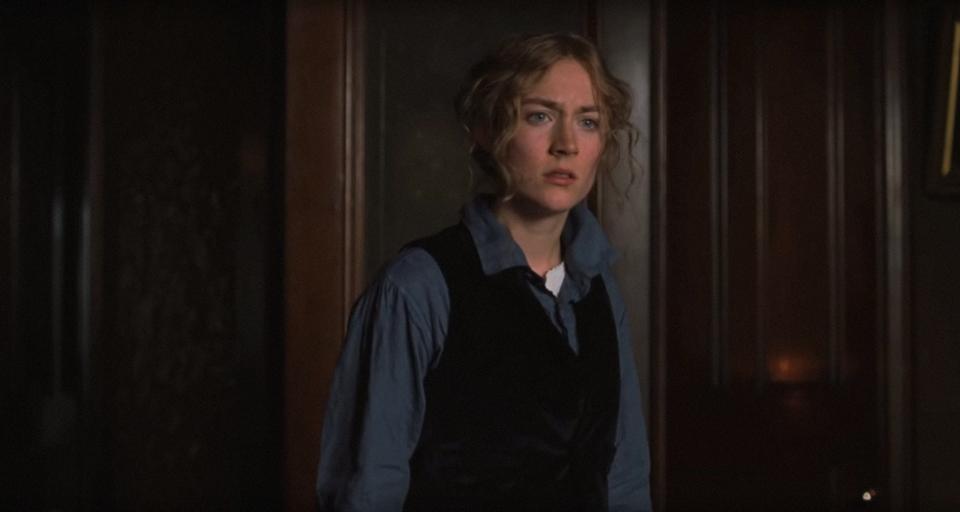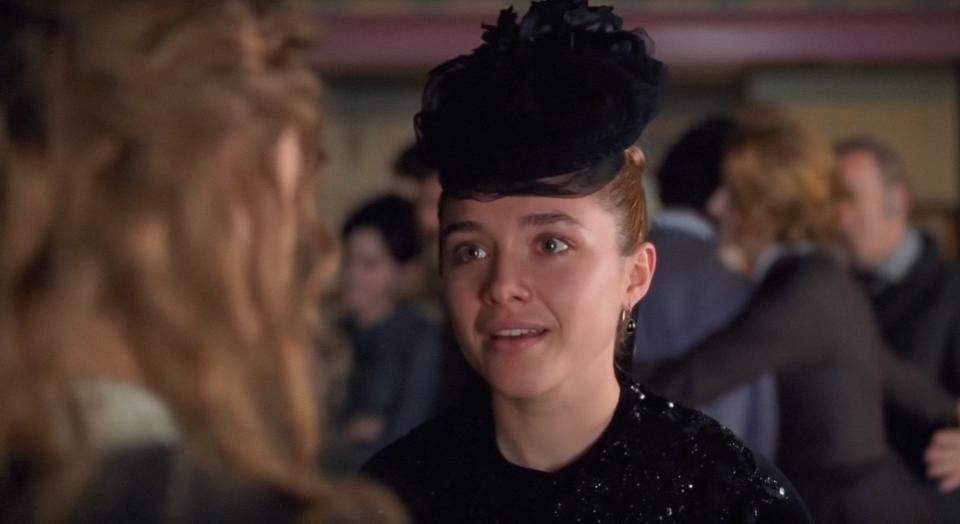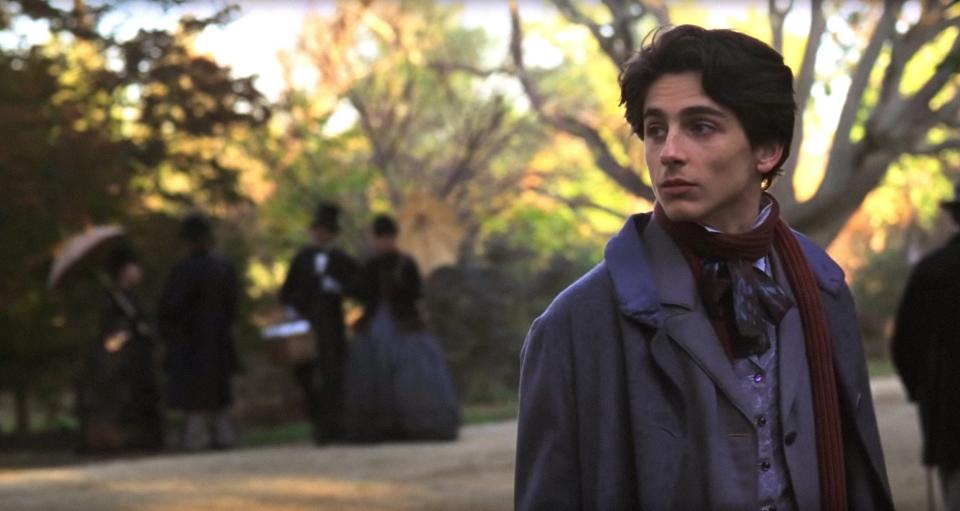Dressing Little Women : Costume Designer Jacqueline Durran on Color, Character, and Breaking the Rules
Greta Gerwig’s 2019 adaptation of Louisa May Alcott’s novel Little Women has been on our minds since the first trailer was released, and now that the movie is out, we can talk about every little detail—particularly its sumptuous costumes.
The March sisters—Meg (Emma Watson), Jo (Saoirse Ronan), Amy (Florence Pugh), and Beth (Eliza Scanlen)—are dressed in carefully selected period-era clothes throughout the movie: Low-key enough to befit their middle-class social status, yet intricate enough to catch the eye, the girls’ clothes perfectly reflect who they are (and, as in the case of an expensive bolt of cloth Meg buys, who they hope to be).
Vogue spoke to Little Women costume designer Jacqueline Durran, an Oscar and BAFTA Award winner who has previously designed costumes for Pride & Prejudice and Atonement, about the process of dressing the stars of one of this year’s biggest movies.
What was your first step in envisioning the costumes for Little Women?
I created a mood board, researching a lot of period-accurate paintings to get a feel for the era. I searched through old photos looking for the essence of Jo, Meg, etc., then I went through all of that with Greta. I looked at early photos of female radicals and people living different kinds of lives at the same time as Louisa May Alcott.

MCDLIWO CO016
Photo: Courtesy of Everett Collection/Columbia PicturesHow did you distinguish visually between the four sisters?
It all arises from character. For example, Jo is the writer, the tomboy, and the most nonconformist, so her costume doesn’t include a corset, which lends a freedom to how she can move. Each girl has an older and younger version of her character; we originally thought we might see Jo wearing a skirt when she’s older in New York, but it just didn’t feel right.
The New England background of the movie is more neutral, but the colors seen onscreen are vivid enough to make the film look lively. Did you intend that?
Each girl had a core color palette that we played with; it wasn’t a firm rule, but we wanted it to be repetitive and consistent. Meg’s was green and lavender, Beth’s was brown and pink, Amy’s was light blue, and Jo’s was red and indigo. The colors are actually pulled from the notebooks that Marmee (played by Laura Dern in the movie) gives the girls in the book, and we added lavender for Meg.

MCDLIWO CO020
Photo: Courtesy of Everett Collection/Columbia PicturesHow does each individual sister’s style reflect her character?
Even as a child, Amy is the most decorated. She loves fancy clothes, a trait that carries on into adulthood; when she’s in Paris, you know she’d be going for the biggest style impact possible. Her style is influenced by Impressionist paintings, which she admires but despairs of matching with her own artwork; she’s the most fashion-forward for 1897, and she’d be maximizing her costume even while painting, even in mourning. Meanwhile, Beth doesn’t dress for occasions; she stays at home, acting as the glue of the family, and doesn’t really care what she wears.
What about Meg? There’s a famous scene in the book, that’s also reflected in the film, involving her and an expensive dress that doesn’t "haunt her delightfully, as a new dress should."
There are no real cues in the book about what Meg’s new dress should look like. We do know it’s supposed to be dove-gray, but they chose new fabric in a different color [for the film]. The dress never gets made, so Meg is just choosing the cloth.

MCDLIWO CO014
Photo: Courtesy of Everett Collection/Columbia PicturesHow did you distinguish Marmee from her daughters in terms of costume?
Marmee was probably the hardest costume. I was inspired by Louisa May Alcott’s mother, who was a radical herself, and Laura [Dern] interpreted that Marmee should be a radical woman, even though she’s from a good East Coast family. Marmee is an adult and an important person in her community, so her clothes needed to be quite Victorian to contrast with the girls. Still, she’s progressive, so it was tricky to show both. If she wore a dark cape, we’d add a red ribbon, to show that Marmee is nonconformist.
How period-accurate are the costumes?
Well, if this was the Victorian era, the girls would have been wearing an elaborate system of bloomers/a chemise, a corset, a hoop, a petticoat, a skirt, and a bodice. We took certain liberties; for example, Beth and Jo don’t wear all that. Jo uses bloomers as trousers. Meg aspires to be a proper lady once she’s married, so we start seeing her in a corset and hoop, whereas Jo was never aspiring to that. There’s a sartorial line between Meg and Jo, and Beth and Amy.

MCDLIWO CO022
Photo: Courtesy of Everett Collection/Columbia PicturesWhat about Laurie? Timothée Chalamet looks amazing in the movie.
All the suits were specially designed to suit Timothée. We took license with the period, because those 1860s boxy jackets weren’t a great look for him. It was important to us to portray him as a true bohemian and a partner to Jo. I prepared pieces of his costume, and then when Timothée got dressed, he would decide how he was going to wear that costume and make the look fresh. There were times when he should have been wearing a jacket, but he didn’t want to; we were all about knowing the rules, and breaking them selectively.
Originally Appeared on Vogue

